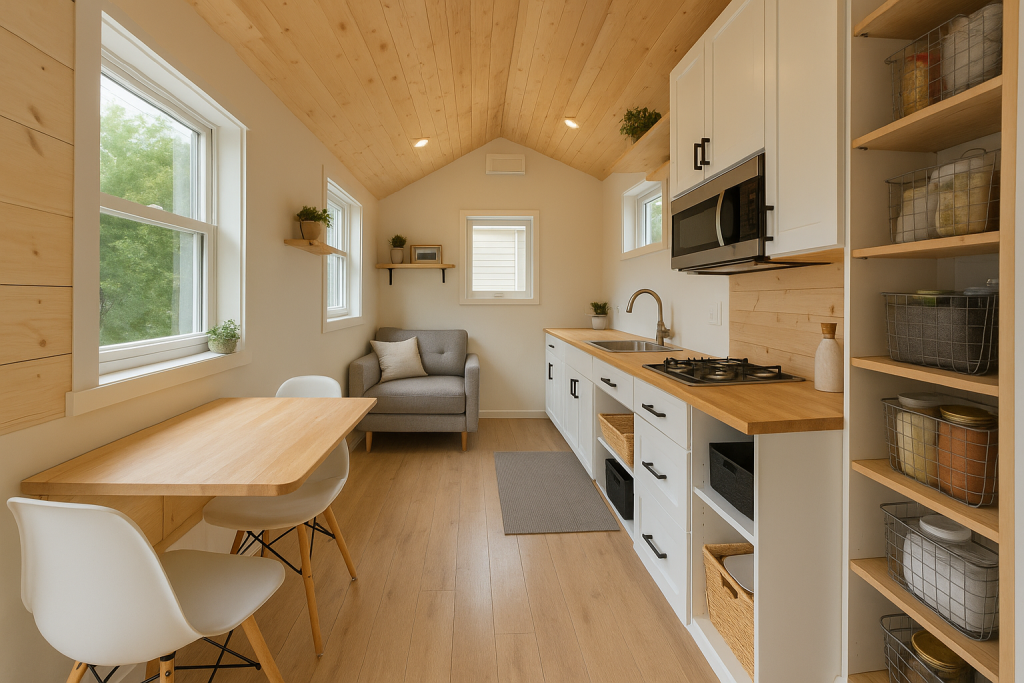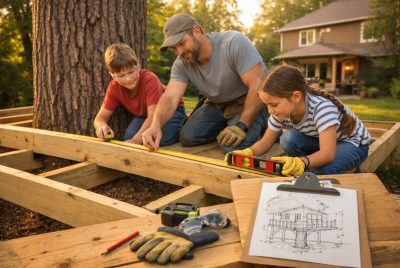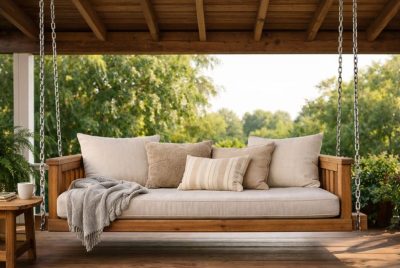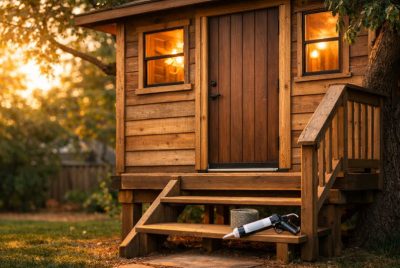Top-Rated Tiny House Communities for Affordable Living
We may earn a commission for purchases made using our links. Please see our disclosure to learn more.
If skyrocketing rent, soaring home prices, and the grind of maintenance have you searching for a better way to live, you’re not alone. More and more people are looking for alternatives—and tiny house communities are topping the list. These vibrant neighborhoods offer affordable living, community spirit, and a chance to simplify life without sacrificing comfort or style.
In this article, you’ll discover everything you need to know about tiny house communities—from what makes them unique, the benefits and challenges, and where to find top-rated options for affordable living. We’ll explore real community reviews, answer your most pressing questions, and even highlight must-have Amazon products to make your small-space living truly shine.
Why Consider Tiny House Communities?
The Joy of Living Small—Together
Choosing a tiny house community isn’t just about having less space—it’s about gaining more of what matters. When you move into a tiny home, you’re trading extra square footage for greater freedom, a simpler lifestyle, and closer bonds with neighbors.
Top Advantages:
- Cost Savings: Tiny homes are budget-friendly, with lower upfront costs, reduced utility bills, and minimal upkeep.
- Strong Community Ties: Enjoy shared amenities, neighborhood gatherings, and friendships that naturally flourish in smaller, more connected communities.
- Eco-Conscious Living: Living small means a smaller environmental footprint—tiny homes use less energy and resources.
- Flexible Locations: From scenic countryside settings to lively urban neighborhoods, tiny house communities can be found in a range of beautiful and convenient places.
Common Types of Tiny House Communities
- RV Parks & Tiny House Villages: Designed for movable tiny homes.
- Eco-Communities: Focused on green living and sustainability.
- Retirement Parks: Age-restricted communities for those looking to downsize after retirement.
- Intentional Living Cohorts: Groups with shared values, hobbies, or goals.

Top-Rated Tiny House Communities in the U.S.
1. Escape Tampa Bay Village (Florida)
Nestled in sunny Florida, Escape Tampa Bay offers designer tiny homes, lush green spaces, and a lively community atmosphere.
Features:
- Pet-friendly policies
- Community gardens
- Quick access to beaches and city amenities
Pros:
Affordable lot rents, high-quality homes, lots of social activities
Cons:
Limited lots, waiting lists can be long
2. Village Farm Austin (Texas)
Village Farm is an agrihood-style community with farmhouse vibes, local markets, and a focus on sustainable living.
Highlights:
- Farm-to-table produce for residents
- Dog parks, walking trails, and community events
Pros:
Eco-conscious, active social calendar, close to downtown Austin
Cons:
Monthly fees can be higher due to amenities
3. The Sanctuary Minnesota (Minnesota)
Known for its beautiful forest setting, The Sanctuary Minnesota is perfect for those wanting to live tiny and close to nature.
Highlights:
- Surrounded by trails, lakes, and wildlife
- Gated access for security
Pros:
Peaceful, strong focus on privacy and nature
Cons:
Remote location, car required for errands
4. Acony Bell Tiny Home Village (North Carolina)
Acony Bell is a scenic community in the Blue Ridge Mountains, popular with outdoor enthusiasts and remote workers.
Features:
- Fast WiFi
- Hiking and biking access
- Weekly social gatherings
Pros:
Flexible lease terms, pet-friendly, fiber internet
Cons:
Limited availability, rural area
5. Lemon Cove Village (California)
A favorite for snowbirds and nature lovers, Lemon Cove offers a vibrant community and affordable rates near Sequoia National Park.
Perks:
- Swimming pool
- Clubhouse and communal kitchen
- Onsite laundry
Pros:
Mild winters, lots of amenities
Cons:
Can be crowded during tourist season
Must-Have Products for Tiny House Living
Living small means you need smart, space-saving essentials. Here are five Amazon-recommended products that tiny house dwellers swear by:
1. Space-Saving Convertible Sofa Bed
Why It’s Great:
Transforms your living room into a guest room instantly—without hogging precious space.
2. Compact All-in-One Washer Dryer
Why It’s Great:
Ideal for tiny homes with no laundry hookups. Wash and dry in one cycle—no laundromat trips required.
3. Multi-Tier Rolling Storage Cart
Why It’s Great:
Adds vertical storage for kitchen, bath, or bedroom—move it anywhere you need.
4. Wall-Mounted Drop Leaf Table
Why It’s Great:
Fold it up for meals, work, or hobbies—then fold down to save space.
5. Stackable Kitchen Pantry Organizers
Why It’s Great:
Declutter your pantry and maximize every inch of storage—see what you have at a glance.

Key Considerations When Choosing a Tiny House Community
Location & Accessibility
- Urban vs. rural settings
- Proximity to work, schools, and hospitals
- Local climate and natural disasters
Amenities & Rules
- Shared spaces (laundry, kitchen, gardens)
- Pet policies and guest restrictions
- HOA fees or community dues
Community Culture
- Social activities and events
- Resident demographics (families, retirees, singles)
- Level of privacy and independence
🧪 Backed by Research: What Science Says
A study published in Cities Journal found that residents of tiny house communities experience increased life satisfaction, lower living costs, and stronger neighborhood bonds compared to traditional housing arrangements.
👉 See the full study on tiny house community satisfaction
A comprehensive review from The Urban Institute highlights that tiny house communities can play a significant role in addressing housing shortages and improving affordability for low- and moderate-income families.
👉 Explore the Urban Institute’s analysis of tiny housing and affordability
FAQs About Tiny House Communities
What are tiny house communities and how do they work?
Tiny house communities are residential neighborhoods designed specifically for small homes (typically 400 sq. ft. or less). Residents lease or buy lots, share amenities, and benefit from a close-knit, supportive environment.
Are tiny house communities legal everywhere in the US?
No—zoning laws vary widely. Some states and cities embrace tiny house communities, while others restrict them. Always check local ordinances before committing.
How much does it cost to live in a tiny house community?
Costs range from $200–$800+ per month for lot rent, plus the price of your home and utilities. Many find total expenses far lower than traditional housing.
Can I rent before buying in a tiny house community?
Many communities offer short- or long-term rentals, so you can “try before you buy.” It’s a great way to see if tiny living suits you.
What are the biggest challenges of tiny house community living?
Downsizing is an adjustment, and privacy can feel limited. Rules, fees, and waiting lists are common. However, most residents find the benefits far outweigh the drawbacks.
More Ways to Save: Building on a Budget
If you’re dreaming of tiny house living on a budget, check out this in-depth guide to building a treehouse on a budget—packed with tips that apply to all types of small, affordable homes.
Conclusion
Tiny house communities offer a fresh, affordable path to homeownership—without sacrificing comfort or connection. Whether you’re seeking a simpler life, downsizing for retirement, or just want a lively, friendly place to call home, there’s a community out there for you.
From community highlights to must-have Amazon finds, you now have the insights and inspiration to take the next step toward affordable living in a thriving tiny house community.




